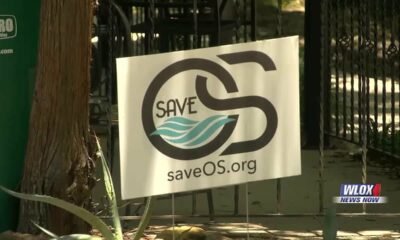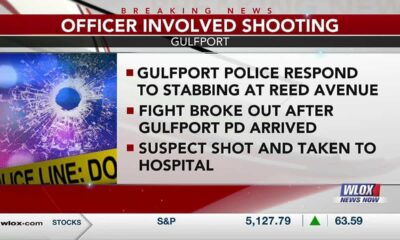Kaiser Health News
$50 Billion in Opioid Settlement Cash Is on the Way. We’re Tracking How It’s Spent.
by Aneri Pattani
Thu, 30 Mar 2023 09:00:00 +0000
More than $50 billion in settlement funds is being delivered to thousands of state and local governments from companies accused of flooding their communities with opioid painkillers that have left millions addicted or dead.
That's an enormous amount of money — double NASA's budget and five times the revenue of an NBA season.
But how that massive windfall is being deployed and how future dollars will be spent seem to be shrouded in mystery. Reporting requirements are scant, and documents filed so far are often so vague as to be useless.
Most of the settlements stipulate that states must spend at least 85% of the money they will receive over the next 15 years on addiction treatment and prevention. But defining those concepts depends on stakeholders' views — and state politics. To some, it might mean opening more treatment sites. To others, buying police cruisers.
Those affected by the opioid epidemic and those working to fight it have an array of ideas: To Marianne Sinisi, who lost her 26-year-old son, Shawn, to overdose in western Pennsylvania, the settlement funds are “blood money” that she hopes can spare other parents similar grief. To Steve Alsum, who works with people who use drugs in Grand Rapids, Michigan, it's a chance to finally reach all those in need. And to David Garbark, who is in recovery from opioid addiction, it's a way to give others in his eastern North Carolina community a second chance, too.
Spending the money effectively and equitably is a tall order, given the persistence and complexity of addiction, which affects individuals and communities, and is the topic of heated debates in scientific research, social services, politics, criminal justice, and even at kitchen tables.
What's more, many states are not being transparent about where the funds are going and who will benefit. An investigation by KHN and Christine Minhee, founder of OpioidSettlementTracker.com, concluded only 12 states have committed to detailed public reporting of all their spending.
The analysis involved scouring hundreds of legal documents, laws, and public statements to determine how each state is divvying up its settlement money among state agencies, city and county governments, and councils that oversee dedicated trusts. The next step was to determine the level and detail of public reporting required. The finding: Few states promise to report in ways that are accessible to the average person, and many are silent on the issue of transparency altogether.
More than $3 billion has gone out to state and local governments so far. KHN will be following how that cash — and the billions set to arrive in coming years — is used.
Per most of the settlements, governments are required to report only on the 15% of the money that can be used for things unrelated to the epidemic, like offsetting budget shortfalls or fixing old roads. As of March 28, only three states and counties had filed such reports. Although they listed dollar amounts, none said precisely how the money was spent.
State and local governments can enact more rigorous reporting protocols — for example, requiring a publicly available list of every place that receives money and for what purpose — but few have so far.
Loading…
Left in the Dark
More than 250,000 Americans have died of overdoses from prescription opioids, which were aggressively promoted as painkillers and distributed by a host of health care companies, including Johnson & Johnson, AmerisourceBergen, McKesson, and Walmart. The settlements are meant to compensate and remediate the effects of that corporate behavior.
But many people whose lives have been upended are again feeling traumatized.
Sinisi said she and other parents who've lost kids to addiction have been left in the dark or, worse, treated like nuisances by officials in charge of the money.
“They want to look at you as this angry parent who lost a child,” she said, “rather than a concerned citizen who wants to see a difference made for other mothers, fathers, and their children.”
In Michigan, even the state's Opioid Advisory Commission, which is tasked with evaluating the use of settlement money, has struggled to track the cash.
For six months after the state legislature allotted $39 million of settlement funds to the health department last summer, little information was made public about how that money would be spent. No news releases. No way for organizations to apply for funds.
“We can't really identify the impact of those dollars if we don't know how they're being used,” said Dr. Cara Poland, the commission's chair and an addiction-medicine doctor.
With scant oversight nationwide, many people fear dollars may flow to efforts that research has proven mostly useless but jibe with the local political bent, like arresting people who use drugs, expanding jails, and favoring abstinence-only recovery over medications. They may go to the loudest bidder, with companies promising to find the next groundbreaking treatment and rehab facilities — some with shoddy track records — eyeing the cash.
Not to mention concerns that money will flow to activities that have little to nothing to do with opioid treatment: building new stadiums or public schools. Back in the '90s, these day-to-day budget priorities consumed most of what states won from cigarette companies in the national tobacco settlement, leaving little for anti-smoking programs.
The opioid settlement funds will be different, say state attorneys general who fought for them. In addition to requiring at least 85% of the money be used on opioid-related expenses, most agreements include a list of suggested interventions like increasing addiction treatment for the uninsured and expanding recovery housing.
“We wanted to give states flexibility on what approaches they wanted to adopt,” while ensuring money didn't go to “provide corporate tax relief” as the tobacco dollars did, said North Carolina Attorney General Josh Stein, who led negotiations for the national settlements.
But enforcement of the 85% standard is, oddly, left to the companies that paid out the money. They are unlikely to be vigilant, legal experts say. The money is committed already and, for many of these multibillion-dollar companies, the settlements are chump change. For example, Johnson & Johnson is set to pay $5 billion over nine years, but the company reported sales of nearly $95 billion in the past year alone.
An Emerging Picture
As the checks start to trickle in, a handful of states are committed to transparency while others seem to be falling short. Missouri has promised to report all its spending in online reports so that anyone can see who receives money, how much, and for what programs. New Hampshire already has posted reports online, and Colorado has created a public dashboard to track how funds are used.
Other states, like Nevada, have taken a middle-of-the-road approach, requiring that recipients report to the legislature or another oversight body, but not ensuring the reports will go public. Some states require audits but don't promise to list specific expenses. And others allow the public to request records but won't provide them automatically.
Then there are states hit hard by the opioid epidemic like Michigan and Ohio, where problems with transparency are already emerging. Each state is expecting to receive at least $1 billion.
When Poland, of Michigan's Opioid Advisory Commission, realized she was getting little information on how the state's funds were being spent, her commission decided to use its first annual report — published this month — to demand better. “Timely and transparent reporting” to the public is “an ethical responsibility,” it said, calling on lawmakers to enact greater oversight for settlement cash recipients and create a public dashboard to track spending.
KHN interviewed nearly a dozen people and filed a public records request to uncover how the state health department is spending the initial settlement funds allocation of $39 million.
A budget document obtained by KHN shows that as of Jan. 9, the Michigan Department of Health and Human Services had contracted $3.9 million in settlement funds to 35 grantees. Most are local health departments or syringe service programs that the state health department has previously funded.
An additional $27 million is set aside for particular interventions, such as growing the addiction treatment workforce, expanding recovery housing, and mitigating the harms of opioid use with medications like naloxone.
And, after KHN's inquiries, the department released a statement that listed similar priorities.
Those initiatives make sense to Jonathan Stoltman, director of the Michigan-based Opioid Policy Institute, which researches stigma and digital privacy in addiction treatment. But he would have liked to have known about them in advance and to have had a clear process laid out for groups to apply for the funds. Otherwise, organizations that are well positioned to use the money to help those most in need may miss a once-in-a-lifetime chance to scale up their work and save lives.
Last summer, when Stoltman inquired about applying for the funds, the health department told him to submit a “high level proposal” to “share around,” according to emails reviewed by KHN.
“Anything that is backdoor scares me,” said Stoltman. “I got lucky that I found who to talk to, even if it didn't go anywhere.”
Steve Alsum, executive director of the Grand Rapids Red Project, which was awarded about $266,000 to improve the health of people who use drugs, said he expected the state to have an application process with scoring criteria to explain why certain groups were chosen. But, he said, “it hasn't been clear who is making the decision and how it's made.”
Jared Welehodsky, who leads the department's efforts related to the settlement, said it is in the process of releasing several competitive grant applications for the bulk of the money. That didn't happen sooner because most payments didn't arrive until the end of 2022 and “we didn't want to comment on how the money was going out when we didn't have money to go out,” he said.
Talk of Keeping the Public Out
In Newark, Ohio, Linda Mossholder, 75, has been inquiring about the settlement dollars at City Council meetings since last summer. As a volunteer with Newark Homeless Outreach, which serves weekly free lunches, she encounters many people who use drugs and wants to see the money help them.
The proud owner of a T-shirt that reads, “Your first mistake is thinking I'm just an old lady,” Mossholder has followed up with emails, voicemails, and public records requests. But she hasn't gotten a clear answer about how the city plans to use the nearly $50,000 it's already received.
In January, Mossholder said, the city's director of public service finally told her the plan was to allocate settlement cash to first responders for naloxone. But when KHN filed public records requests to confirm, City Auditor Ryan Bubb wrote, “No funds have been allocated or spent.”
Meanwhile, in northeastern Ohio, a regional board that will control millions of settlement dollars spent a February meeting discussing whether the public should be allowed to access meeting recordings at all.
“I wouldn't open it up to the public, honestly,” said Judy Moran, a board member who represents Eastlake, according to a recording of the meeting obtained by KHN. Other board members asked if their gatherings were subject to the state's open-meeting laws.
Moran later told KHN, “Of course the public has a right to know how these funds are disbursed,” but she said she worried recordings would allow people to take words “out of context.”
In Ohio at least, that may not be a choice for much longer.
A lawsuit brought by Harm Reduction Ohio to open the meetings of a separate board — the OneOhio Recovery Foundation, which oversees the lion's share of the state's expected $1 billion — is working its way through the courts. A local judge this month rejected the foundation's request to dismiss the lawsuit, writing that “the public deserves transparency.”
But OneOhio spokesperson Connie Luck said the foundation is a “private, nonprofit organization, and not a government agency.” It has so far allowed public attendance at meetings, but has said it is not required to do so.
The final ruling in this lawsuit, which is the first of its kind on opioid settlement funds, will set a precedent for the public's right to information nationally.
In some parts of the country, the prospect of dollars to treat a long-underfunded epidemic brings hope, said Tricia Christensen, who works at a nonprofit tracking settlement funds across Appalachia. When people know what's happening, it not only deters misuse but can reveal surprising successes, she said.
That knowledge is empowering.
“These funds are the cavalry coming in. You're finally getting relief after suffering alone for so long,” said Crystal Glass, of southwestern Virginia, who is in recovery from opioid and meth use and now works as a peer recovery specialist.
She hopes officials will involve people affected by addiction in their decisions.
As she put it: Transparency “is letting everyone — I mean everyone — know they can be part of this.”
KHN's Colleen DeGuzman and Megan Kalata contributed to this report.
By: Aneri Pattani
Title: $50 Billion in Opioid Settlement Cash Is on the Way. We're Tracking How It's Spent.
Sourced From: khn.org/news/article/opioid-drugmakers-settlement-funds-50-billion-dollars-khn-investigation-payback/
Published Date: Thu, 30 Mar 2023 09:00:00 +0000
Kaiser Health News
Journalists Delve Into Climate Change, Medicaid ‘Unwinding,’ and the Gap in Mortality Rates
Sat, 04 May 2024 09:00:00 +0000
KFF Health News senior correspondent Samantha Young discussed Medicaid and climate change on KCBS Radio's “On-Demand” podcast on April 29.
- Click here to hear Young on KCBS
- Read Young's “AC, Power Banks, Mini Fridges: Oregon Equips Medicaid Patients for Climate Change“
KFF Health News contributor Andy Miller discussed Medicaid unwinding on WUGA's “The Georgia Health Report” on April 26.
- Click here to hear Miller on “The Georgia Health Report”
- Read Phil Galewitz' “Millions Were Booted From Medicaid. The Insurers That Run It Gained Medicaid Revenue Anyway.“
KFF Health News Nevada correspondent Jazmin Orozco Rodriguez discussed mortality rates in rural America on The Daily Yonder's “The Yonder Report” on April 24.
- Click here to hear Rodriguez on “The Yonder Report”
- Read Rodriguez' “City-Country Mortality Gap Widens Amid Persistent Holes in Rural Health Care Access”
——————————
Title: Journalists Delve Into Climate Change, Medicaid ‘Unwinding,' and the Gap in Mortality Rates
Sourced From: kffhealthnews.org/news/article/journalists-delve-into-climate-change-medicaid-unwinding-and-the-gap-in-mortality-rates/
Published Date: Sat, 04 May 2024 09:00:00 +0000
Did you miss our previous article…
https://www.biloxinewsevents.com/oh-dear-baby-gear-why-are-the-manuals-so-unclear/
Kaiser Health News
Oh, Dear! Baby Gear! Why Are the Manuals So Unclear?
Darius Tahir
Fri, 03 May 2024 09:00:00 +0000
Since becoming a father a few months ago, I've been nursing a grudge against something tiny, seemingly inconsequential, and often discarded: instructional manuals. Parenthood requires a lot of gadgetry to maintain a kid's health and welfare. Those gadgets require puzzling over booklets, decoding inscrutable pictographs, and wondering whether warnings can be safely ignored or are actually disclosing a hazard.
To give an example, my daughter, typically a cooing little marsupial, quickly discovered babyhood's superpower: Infants emerge from the womb with talon-strength fingernails. She wasn't afraid to use them, against either her parents or herself. So we purchased a pistachio-green, hand-held mani-pedi device.
That was the easy part. The difficulty came when we consulted the manual, a palm-sized, two-page document.
The wandlike tool is topped with a whirring disc. One can apparently adjust the speed of its rotation using a sliding toggle on the wand. But the product manual offered confusing advice: “Please do not use round center position grinding,” it said. Instead, “Please use the outer circle position to grinding.” It also proclaimed, “Stay away from children.” In finer print, the manual revealed the potential combination of kids and the device's smaller parts was the reason for concern.
One would hope for more clarity about a doodad that could inadvertently cause pain.
Later, I noticed another warning: “If you do not use this product for a long time, please remove the battery.” Was it dangerous? Or simply an unclear and unhelpful yet innocuous heads-up? We didn't know what to do with this information.
We now notice shoddy instructions everywhere.
One baby carrier insert told us to use the product for infants with “adequate” head, neck, and torso control — a vague phrase. (The manufacturer declined to comment.)
Another manual, this one online and for a car seat — a device that's supposed to protect your kid — informed readers with words and images that a model baby was “properly positioned” relative to the top of the headrest “structure” when more than one inch from the top. Just pixels away, the same model, slumped further down, was deemed improperly positioned: “The headrest should not be more than 1” from the top of her head,” it said, in tension with its earlier instructions. Which was it, more than one inch or not? So we fiddle and hope for the best.
I acknowledge this sounds like new-parent paranoia. But we're not entirely crazy: Manuals are important, and ones for baby products “are notoriously difficult to write,” Paul Ballard, the managing director of 3di Information Solutions, a technical writing firm, told me.
Deborah Girasek, a professor of social and behavior sciences at the Uniformed Services University of the Health Sciences, told me that for decades, for the young and middle-aged alike, unintentional injury has been the leading cause of death. That's drownings, fires, suffocation, car crashes. The USU is a federal service academy training medical students destined for the armed services or other parts of the government.
Some of these deaths are caused by lack of effective communication — that is, the failure of instruction about how to avoid injury.
And these problems stretch from cheap devices to the most sophisticated products of research and development.
It's a shortcoming that's prompted several regulatory agencies charged with keeping Americans healthy, including the Consumer Product Safety Commission, the Food and Drug Administration, and the National Highway Traffic Safety Administration, to prod companies into providing more helpful instructions.
By some lights, they've had success. NHTSA, for example, has employees who actually read manuals. The agency says about three-quarters of car seats' manuals rate four or five stars out of five, up from 38% in 2008. Then again, our car seat's has a five-star rating. But it turns out the agency doesn't evaluate online material.
Medical product manuals sometimes don't fare too well either. Raj Ratwani, director of MedStar Health's Human Factors program, told me that, for a class he teaches to nurses and doctors, he prompted students to evaluate the instructions for covid-19 tests. The results were poor. One time, instructions detailed two swabs. The kit had only one.
Technical writers I spoke with identified this kind of mistake as a symptom of cost cutting. Maybe a company creates one manual meant to cover a range of products. Maybe it puts together the manual at the last moment. Maybe it farms out the task to marketers, who don't necessarily think about how manuals need to evolve as the products do.
For some of these cost-cutting tactics, “the motivation for doing it can be cynical,” Ballard said.
Who knows.
Some corners of the technical writing world are gloomy. People worry their jobs aren't secure, that they're going to be replaced by someone overseas or artificial intelligence. Indeed, multiple people I spoke with said they'd heard about generative AI experiments in this area.
Even before AI has had its effect, the job market has weighed in. According to the federal government, the number of technical writers fell by a third from 2001, its recent peak, to 2023.
One solution for people like us — frustrated by inscrutable instructions — is to turn to another uncharted world: social media. YouTube, for instance, has helped us figure out a lot of the baby gadgets we have acquired. But those videos also are part of a wild West, where creators offer helpful tips on baby products then refer us to their other productions (read: ads) touting things like weight loss services. Everyone's got to make a living, of course; but I'd rather they not make a buck off viewers' postpartum anxiety.
It reminds me of an old insight that became a digital-age cliché: Information wants to be free. Everyone forgets the second half: Information also wants to be expensive. It's cheap to share information once produced, but producing that information is costly — and a process that can't easily or cheaply be replaced. Someone must pay. Instruction manuals are just another example.
——————————
By: Darius Tahir
Title: Oh, Dear! Baby Gear! Why Are the Manuals So Unclear?
Sourced From: kffhealthnews.org/news/article/baby-product-instruction-manuals-confusing-technical-writing/
Published Date: Fri, 03 May 2024 09:00:00 +0000
Kaiser Health News
California Floats Extending Health Insurance Subsidies to All Adult Immigrants
Jasmine Aguilera, El Tímpano
Fri, 03 May 2024 09:00:00 +0000
Marisol Pantoja Toribio found a lump in her breast in early January. Uninsured and living in California without legal status and without her family, the usually happy-go-lucky 43-year-old quickly realized how limited her options were.
“I said, ‘What am I going to do?'” she said in Spanish, quickly getting emotional. She immediately worried she might have cancer. “I went back and forth — I have [cancer], I don't have it, I have it, I don't have it.” And if she was sick, she added, she wouldn't be able to work or pay her rent. Without health insurance, Pantoja Toribio couldn't afford to find out if she had a serious condition.
Beginning this year, Medi-Cal, California's Medicaid program, expanded to include immigrants lacking legal residency, timing that could have worked out perfectly for Pantoja Toribio, who has lived in the Bay Area city of Brentwood for three years. But her application for Medi-Cal was quickly rejected: As a farmworker earning $16 an hour, her annual income of roughly $24,000 was too high to qualify for the program.
California is the first state to expand Medicaid to all qualifying adults regardless of immigration status, a move celebrated by health advocates and political leaders across the state. But many immigrants without permanent legal status, especially those who live in parts of California where the cost of living is highest, earn slightly too much money to qualify for Medi-Cal.
The state is footing the bill for the Medi-Cal expansion, but federal law bars those it calls “undocumented” from receiving insurance subsidies or other benefits from the Affordable Care Act, leaving many employed but without viable health insurance options.
Now, the same health advocates who fought for the Medi-Cal expansion say the next step in achieving health equity is expanding Covered California, the state's ACA marketplace, to all immigrant adults by passing AB 4.
“There are people in this state who work and are the backbone of so many sectors of our economy and contribute their labor and even taxes … but they are locked out of our social safety net,” said Sarah Dar, policy director at the California Immigrant Policy Center, one of two organizations sponsoring the bill, dubbed #Health4All.
To qualify for Medi-Cal, an individual cannot earn more than 138% of the federal poverty level, which currently amounts to nearly $21,000 a year for a single person. A family of three would need to earn less than $35,632 a year.
For people above those thresholds, the Covered California marketplace offers various health plans, often with federal and state subsidies, yielding premiums as low as $10 a month. The hope is to create what advocates call a “mirror marketplace” on the Covered California website so that immigrants regardless of status can be offered the same health plans that would be subsidized only by the state.
Despite a Democratic supermajority in the legislature, the bill might struggle to pass, with the state facing a projected budget deficit for next year of anywhere from $38 billion to $73 billion. Gov. Gavin Newsom and legislative leaders announced a $17 billion package to start reducing the gap, but significant spending cuts appear inevitable.
It's not clear how much it would cost to extend Covered California to all immigrants, according to Assembly member Joaquin Arambula, the Fresno Democrat who introduced the bill.
The immigrant policy center estimates that setting up the marketplace would cost at least $15 million. If the bill passes, sponsors would then need to secure funding for the subsidies, which could run into the billions of dollars annually.
“It is a tough time to be asking for new expenditures,” Dar said. “The mirror marketplace startup cost is a relatively very low number. So we're hopeful that it's still within the realm of possibility.”
Arambula said he's optimistic the state will continue to lead in improving access to health care for immigrants who lack legal residency.
“I believe we will continue to stand up, as we are working to make this a California for all,” he said.
The bill passed the Assembly last July on a 64-9 vote and now awaits action by the Senate Appropriations Committee, Arambula's office said.
An estimated 520,000 people in California would qualify for a Covered California plan if not for their lack of legal status, according to the labor research center at the University of California-Berkeley. Pantoja Toribio, who emigrated alone from Mexico after leaving an abusive relationship, said she was lucky. She learned about alternative health care options when she made her weekly visit to a food pantry at Hijas del Campo, a Contra Costa County farmworker advocacy organization, where they told her she might qualify for a plan for low-income people through Kaiser Permanente.
Pantoja Toribio applied just before open enrollment closed at the end of January. Through the plan, she learned that the lump in her breast was not cancerous.
“God heard me,” she said. “Thank God.”
This article was produced by KFF Health News, which publishes California Healthline, an editorially independent service of the California Health Care Foundation.
——————————
By: Jasmine Aguilera, El Tímpano
Title: California Floats Extending Health Insurance Subsidies to All Adult Immigrants
Sourced From: kffhealthnews.org/news/article/california-legislation-medicaid-subsidies-all-adult-immigrants/
Published Date: Fri, 03 May 2024 09:00:00 +0000
Did you miss our previous article…
https://www.biloxinewsevents.com/bird-flu-is-bad-for-poultry-and-dairy-cows-its-not-a-dire-threat-for-most-of-us-yet/
-
SuperTalk FM3 days ago
Driver’s education set to become mandatory in Mississippi as bill passes
-
SuperTalk FM6 days ago
Festival merger in Leland sets up one major event for Mississippi Delta
-
SuperTalk FM2 days ago
State approves $160M to expand Highway 7 to four lanes in Lafayette County
-
Mississippi Business4 days ago
Geartek expanding operations in Alcorn County
-
SuperTalk FM6 days ago
PERS bill set to phase in employer rate increase heads to governor’s desk
-
Mississippi News5 days ago
Two women accused of shoplifting across southeast captured in Mississippi
-
Mississippi News3 days ago
Altercation at Mississippi police department leads to officer-involved shooting
-
Mississippi Today6 days ago
Podcast: The contentious final days of the 2024 legislative session




























![HIGH SCHOOL BASEBALL: Vancleave @ East Central (5/4/2024) [5A Playoffs, Second Round]](https://www.biloxinewsevents.com/wp-content/uploads/2024/05/1714933788_maxresdefault-80x80.jpg)
![HIGH SCHOOL BASEBALL: George County vs. West Jones (MHSAA Playoffs) [05/03/24]](https://www.biloxinewsevents.com/wp-content/uploads/2024/05/1714928237_maxresdefault-80x80.jpg)
![HIGH SCHOOL SOFTBALL: West Harrison vs. George County (MHSAA Playoffs) [05/03/24]](https://www.biloxinewsevents.com/wp-content/uploads/2024/05/1714941224_maxresdefault-80x80.jpg)
![HIGH SCHOOL BASEBALL: East Central @ Vancleave (5/3/2024) [5A Playoffs, Second Round]](https://www.biloxinewsevents.com/wp-content/uploads/2024/05/1714935642_maxresdefault-80x80.jpg)
![HIGH SCHOOL SOFTBALL: Petal @ Ocean Springs (5/3/2024) [7A Playoffs, Second Round]](https://www.biloxinewsevents.com/wp-content/uploads/2024/05/1714939362_maxresdefault-80x80.jpg)






